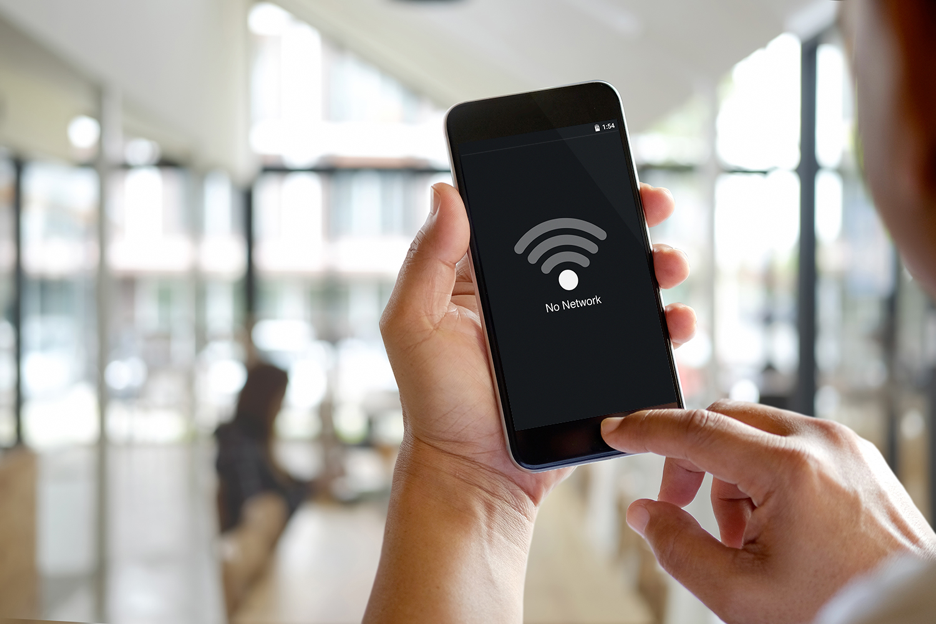Weary of Wireless Woes? Choose the Right Options for Savings and Efficiency

Second in a 3-part series
Today’s expanding mobile-use raises expectations for fast, seamless connectivity. Still, priorities vary from venue to venue. Is your primary goal worker productivity, visitor convenience, public safety, or all the above?
Wireless connectivity woes grab the attention of building owners, managers, and other stakeholders. Workers and guests don’t like dropped calls, slow downloads, and other shortcomings.
Most of the increase in mobile traffic is indoors. About 80 percent of data traffic occurs indoors. At the same time, smart buildings rely on a rapidly evolving Internet of Things (IoT). One source estimates the global smart building market size is projected to reach US$109 billion by 2026, with a CAGR (compound annual growth rate) of 12.6%.
The Proliferation of Wireless Tech
The rapid evolution of wireless connectivity options confounds many. Do you feel overwhelmed by all the choices? Are you unsure of what is right for your organization today and tomorrow? Certainly, you are not alone.
The arrival of 5G and CBRS really spice up the mix. CBRS-based private networks offer building owners/managers new control over their in-building wireless services. At the same time, 5G deployments present new challenges. Deloitte observes that 5G’s millimeter bands tend to “have limited range and lower penetration.” This requires special accommodations in office buildings. 5G remains a nascent technology requiring specialized phones and equipment. As Deloitte says, “In reality, 5G is very much in the “build” phase right now.” Still, Gartner projects 5G network infrastructure revenues of $4.2 billion, a year-over-year increase of 89 percent.
Seeking the Ideal Solutions
Astute stakeholders seek timely, simple, and affordable in-building wireless solutions in office buildings, hospitals, universities, and corporate headquarters. Those in charge seek wireless solutions delivering excellent ROI and simple scalability.
Every surfer wants to ride the best wave. Jumping on the board too early or too late doesn’t work. The same is true with in-building wireless connectivity. When it comes to delivering exceptional service, you want to select the right wave. Time your move based on solid due diligence. The best wireless solutions offer both savings and efficiency. Building owners and managers that meet user expectations seize a competitive edge.
Picking the Right Options
Your venue’s perfect mid-point lies somewhere between future-ready and overkill. To address wireless demand, building owners/managers have many options.
Distributed antenna systems (DAS)
A distributed antenna system (DAS) features antennas and amplifiers strategically positioned throughout a structure to provide continuous edge connectivity. DAS provides multi-carrier service, reliable signals, and robust capacity scaled to your needs. Your long-term cost of ownership benefits from the excellent scalability and upgradeability of DAS.
DAS is often an ideal solution when there is a high volume of users in large buildings exceeding 100,000 sqft in size. A scaleable direct connection to cellular networks prevents overloading. DAS delivers seamless, reliable in-building connectivity without undue expense or excess complexity.
Ideal DAS solutions are:
- Fiber-based — Fiber does not become obsolete, and it offers virtually unlimited bandwidth to support applications today as well as tomorrow.
- Full-spectrum — You want to minimize hardware costs. Therefore, employ a DAS solution that supports the full range of cellular and public safety frequencies.
- Ready for tomorrow — You’ll want a system that allows you to add new frequencies in the future. Modular systems invariably improve ROI.
Signal repeaters/boosters
Cellular signal boosters are network extenders that provide coverage but do not add capacity. A booster captures an outside signal, amplifies it, and transmits it. Signal boosters work across all radio frequencies used by the major cellular providers.
Small cells
Small cells are nodes strategically positioned throughout a structure. They deliver a reliable cellular signal in places where the signal was weak or non-existent. They do not support multiple carriers operating at various frequencies. In the workplace, BYOD devices present a problem. To accommodate mobile devices using various networks, you will need multiple layers of small cell equipment, increasing capital, and installation costs.
Small cells resolve capacity and coverage issues in smaller office buildings. They create hotspots where coverage is otherwise lacking or insufficient. The limitation is that they are carrier-specific.
Wi-Fi solutions
Now, Wi-Fi 6 enters the picture. The Wireless Alliance designates qualifying equipment as Wi-Fi Certified 6. The next-gen standard delivers higher data rates, increased capacity, and improved power efficiency. It performs well in settings where many devices are simultaneously connected.
Users remain connected to the Wi-Fi network as they move about within the building’s wireless local area network (WLAN) coverage area. However, coverage ends as the user exits the building. By contrast, a cellular network delivers direct internet access as the mobile user transitions from indoors to outdoors or vice versa.
Wi-Fi and cellular coverage are not an either-or proposition. They complement each other. The business and consumer demand for bandwidth is great and increasing by the day with no end in sight. The amount of bandwidth provided by cellular networks greatly exceeds the bandwidth available for use by Wi-Fi. In the years ahead, a large amount of additional spectrum will be specified for use by both Wi-Fi and cellular networks.
Planning for Indoor Wireless: Today & Tomorrow
There is little doubt that future demand for indoor wireless will grow, but at what pace? What surprises lie just around the corner? Whenever possible, avoid the plague of repeated retrofitting. For many, the best wireless solutions are those that are eminently scalable.
Due diligence is vital in achieving the desired balance between savings and efficiency.
SOLiD: Your Trusted Advisor
Count on SOLiD to be the voice of clarity in the ever-changing world of wireless connectivity. Learn more about solving your connectivity issues. Learn more about the latest technologies.